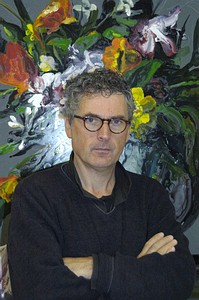The Angels of the Pietà. About Giovanni Bellini
The exhibition is about one of the masterpieces in the Italian painting of the fifteenth century, and the most important work of art of this museum. It is the Dead Christ Supported by Angels by Giovanni Bellini, the great painter with whom the Renaissance art started in Venice around the year 1450. The painting boasts an illustrious origin: the Oratory of St. Anthony which used to stand near the church of St. Francis, then transformed into the Malatesta Temple.
The theme of the dead Christ with the angels was very dear to the Venetian art and particularly to Giovanni Bellini, a painter who was able, like no other in Venice between the fifteenth and the sixteenth centuries, to interpret “in a lively way” the religious subjects: from the Madonnas with the Child to the altarpieces, to the various different representations of the Passion (as the very famous one of Christ in the Pietà with the Virgin Mary and St. John the Evangelist at Brera), and of Christ, the man of sorrows (as some critics also consider the painting of Rimini).
The theme of the dead Christ with the angels had started to spread from Donatello’s prototype sculpture of the Altar of the Saint in Padua (1449), finding great success in Venice and in the Marche region, for reasons that, despite the studies, still leave room for further search. Indeed, one of the lines of investigations of this exhibition is iconographical and develops itself thanks to a comparison with other beautiful works of the fifteenth century: Christ and the angels by Marco Zoppo, as well as the Beheading of St. John the Baptist by the same author, both located in the Civic Museum of Pesaro; the papier-mâché relief at the Museum of Faenza; the wooden board by the Bolognese artist Francesco Francia in the National Picture-Gallery of Bologna; and the splendid bronze medal by Matteo de’ Pasti.
Just a few paintings about Jesus’ Passion are as poignant and compelling as the one in Rimini, which –- unlike all the others – has its own peculiarities and exceptions, not always highlighted by the critics. For example, Christ is not standing inside the tomb, but rather He is sitting on a panel that could be identified with an altar.
The four angels surrounding Him, although sad with melancholy, do not cry uncontrollably, unlike other contemporary examples; they are represented in an attitude of wonder, meditation, and contemplation. Such an attitude is emphasized by the angel on the right, who holds Jesus’ arm and looks at the sore in His hand. The angel on the left, instead, is portrayed in the attitude of someone who witnesses (and possibly supervises) a scene in which his companions are differently engaged: one angel, whose face we can’t see, supports, or rather raises Jesus’ strong body; another angel, behind him, holds a nail from the cross, a clear reference to the Crucifixion.
Precisely the different positions of these angels have called for some interpretations that separate the painting of Rimini from the traditional Christ, man of sorrows, accompanied or not by the weeping angels. The first, very interesting interpretation is based on the hypothesis that this Pietà is connected to the mystery and the sacrifice of the Eucharist: the Angels raise the body of the Lord onto the altar. Another, equally compelling, interpretation is that they are preparing Christ for His resurrection.
Actually, this scene is never mentioned in the sacred texts which just describe the Crucifixion, the Deposition from the cross, and the Placing into the tomb. This is the sequence of Good Friday which is followed by the recount of the Resurrection, not only in terms of iconography, but also in the text. But between Good Friday and the Sunday of the Resurrection there is the great mystery of Saturday: Christ’s descent into hell.
Also Giovanni Bellini’s painting (as well as all the paintings of artists who worked on the theme of the dead Christ) has no precise correspondence in the texts, but something can perhaps be found in the liturgy, especially in the ancient Eastern liturgy; however, the research has not led to reliable conclusions, yet. Furthermore, Bellini’s representation is different from any other and it is almost something “unique” in the context of the Western painting.
All these considerations allow us to admire this stunning masterpiece with much greater attention than if we observed it only aesthetically. Everybody can notice the haunting beauty of the Lord’s figure that stands out from the black background, like a relief from the classical age, surrounded by angels-children busy in their devout task of assisting Him.
Exhibit promoted by the City of Rimini – Municipal Museums – Foundation Meeting for Friendship amongst People. Curated by Marco Bona Castellotti and Massimo Pulini.





